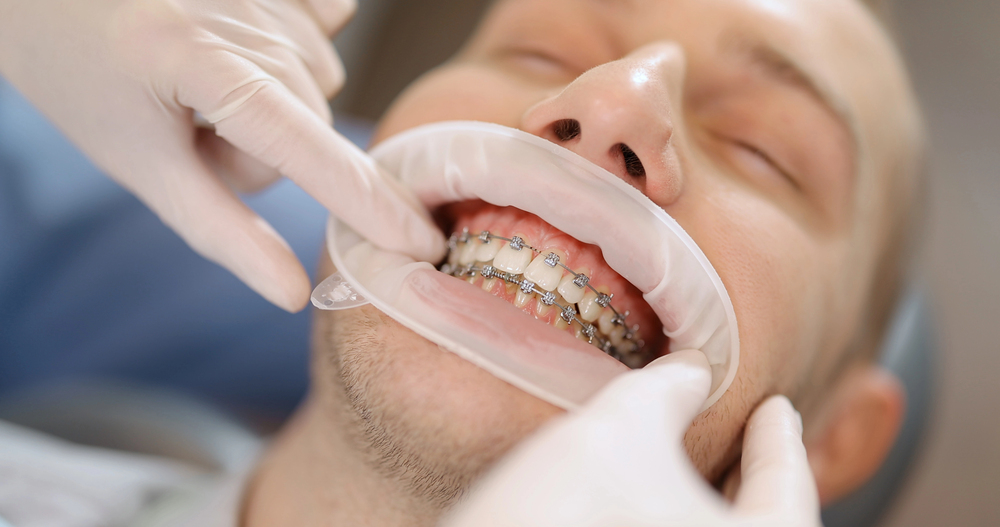Orthodontics has always balanced between two ambitions: correcting function and enhancing aesthetics. Traditionally, this balance has relied on mechanics—wires, brackets, and forces carefully calibrated to move teeth into alignment. Yet, as medicine increasingly looks to biology for inspiration, orthodontics is undergoing its own transformation. Biomimicry—the practice of studying and emulating nature’s strategies—offers a revolutionary lens through which we can rethink how teeth are guided into harmony. Instead of imposing rigid mechanical systems, biomimicry invites us to learn from the elegant efficiency of natural processes.
Nature as an Engineer of Alignment
In the wild, balance and adaptation are not enforced but achieved. Consider the growth of trees: roots shift through soil, responding to obstacles by curving, dividing, and redirecting without breaking their structural integrity. Similarly, the way bones remodel in response to stress, or the way shells grow with uniform curvature, provides insights into natural systems of resilience and precision. These mechanisms can teach orthodontics how to apply pressure and stimuli that harmonize with the body’s innate responses, rather than working against them.
Current orthodontic science already leans on biology: bone remodeling is the very principle that allows teeth to move. But biomimicry takes this further, asking: what if the materials, devices, and forces used in treatment could mimic the adaptive, responsive qualities of living systems? Imagine braces or aligners designed not as static molds but as dynamic structures—adjusting in micro-increments, responding to saliva chemistry, temperature, and even patient diet, much like a tree responds to changing seasons.
Adaptive Systems and Patient-Centered Care
Nature thrives on adaptability. Orthodontics can mirror this principle by creating systems that are not rigid prescriptions but living, learning technologies. For example, orthodontic wires embedded with smart alloys already adjust to body temperature, gradually releasing force. Future biomimetic innovations might include aligners embedded with bio-sensors, capable of communicating with both patient and clinician about treatment progress. These aligners could adapt their tension, much as tendons adapt to repeated stress.
Such adaptive orthodontics would be especially powerful for adults seeking to improve their health. Many adults delay orthodontic treatment, imagining it as cosmetic vanity or a youthful rite of passage. Yet alignment is far more than appearance—it affects airway function, digestion, and musculoskeletal balance. Through biomimicry, orthodontics evolves into a powerful tool for adults seeking to improve their health, not just their smile. By aligning with natural principles of healing and growth, treatments could become gentler, more efficient, and more compatible with the body’s rhythms.
Efficiency Through Energy Conservation
Nature is profoundly economical: no branch grows without purpose, no root extends where it cannot thrive. In orthodontics, biomimetic approaches could mirror this principle by conserving energy and reducing unnecessary interventions. For instance, aligner systems that predict and adapt to the body’s natural tendencies could shorten treatment time by working with the grain of biological processes. Instead of forcing teeth through resistant paths, treatment could identify and leverage directions of least resistance, akin to how water carves its course through rock.
This efficiency does not merely save months of treatment; it also reduces the psychological burden. Adult patients often struggle with compliance, juggling careers and family life. A biomimetic, adaptive system respects their time and biology, ensuring treatment feels less like an imposed regimen and more like a natural evolution.
Aesthetic Symmetry Meets Functional Harmony
In nature, beauty is rarely symmetrical in the strict mathematical sense, but rather in balance—petals arranged to optimize sunlight, shells spiraled according to the golden ratio. Orthodontics can learn from this by redefining the concept of the “perfect smile.” Rather than chasing an artificial ideal, biomimicry urges a pursuit of functional beauty, where alignment enhances not just looks but also breathing, chewing, and long-term oral health.
This shift is especially significant in adult orthodontics. A 45-year-old patient is unlikely to care about adolescent aesthetics; their priority is wellness, confidence, and the ability to eat, speak, and breathe without hindrance. A biomimetic approach frames orthodontics not as cosmetic correction but as a holistic integration of form and function—a true reflection of nature’s wisdom.
The Ethical Dimension of Biomimicry
Biomimicry also nudges orthodontics into ethical reflection. Nature wastes nothing; it heals through efficiency and respect for resources. Applying this philosophy to dentistry calls for environmentally sustainable materials, reduced reliance on plastics, and innovations that minimize waste. Aligners, for example, could one day be produced from biodegradable biomaterials modeled after organic resilience, echoing the regenerative qualities of bone or plant fibers.
This ecological lens resonates with modern patients, especially adults seeking treatment as part of a broader commitment to wellness and sustainability. In this sense, orthodontics as a powerful tool for adults seeking to improve their health extends beyond the individual, touching environmental and societal well-being.
A Smile Modeled on Life Itself
Biomimicry in orthodontics is not a distant dream—it is an unfolding reality. Already, researchers are experimenting with bioactive materials, smart wires, and AI-driven modeling inspired by natural growth. The next decades may see orthodontic devices that feel less like prosthetics and more like companions, working in harmony with the body, adjusting seamlessly like a vine climbing a trellis.
The future of orthodontics lies in humility: the willingness to learn from systems refined over millions of years. Teeth, bones, and soft tissues already know how to grow, adapt, and align. Our role is to guide, not command—to partner with biology rather than overrule it. Through biomimicry, orthodontics transcends mechanics to become a discipline of harmony, balance, and sustainable health.
For the adult patient considering treatment, this represents a profound shift. No longer is orthodontics a cosmetic afterthought or a teenage memory of metallic braces. Instead, it becomes a powerful tool for adults seeking to improve their health—one rooted in the wisdom of nature, refined by science, and expressed in the universal language of a smile.

